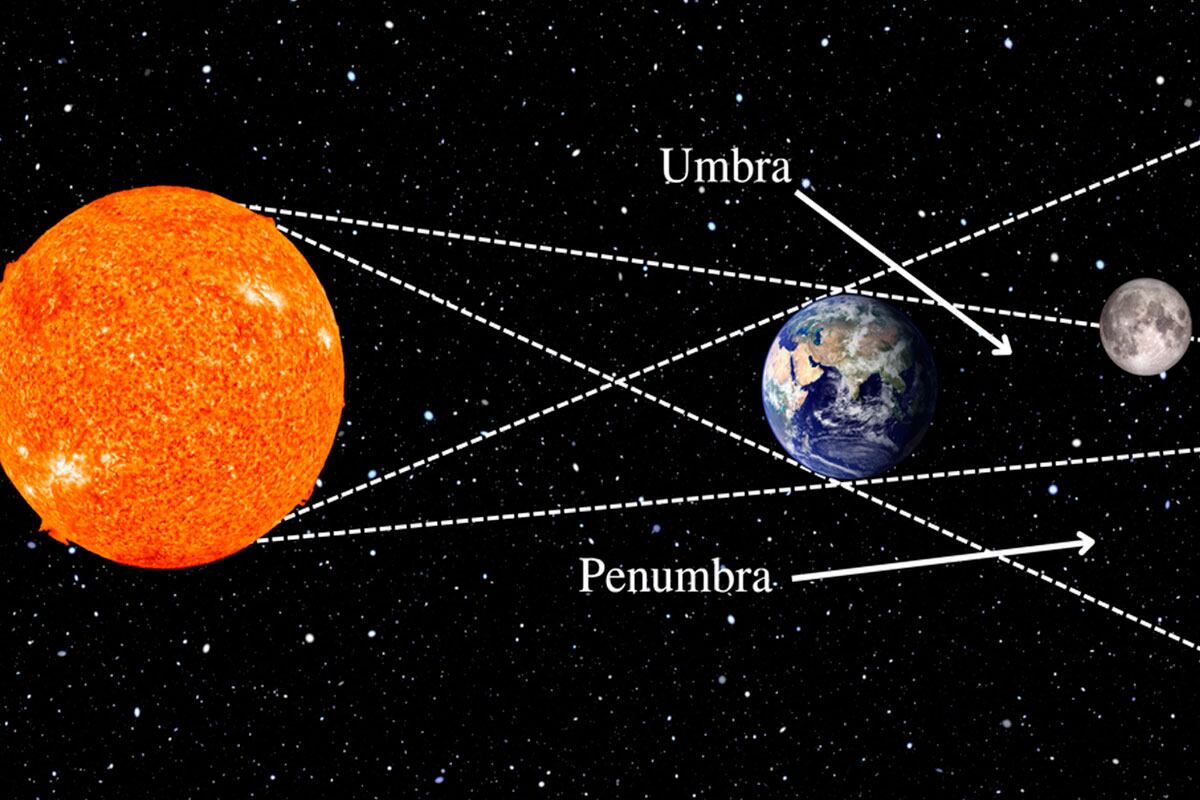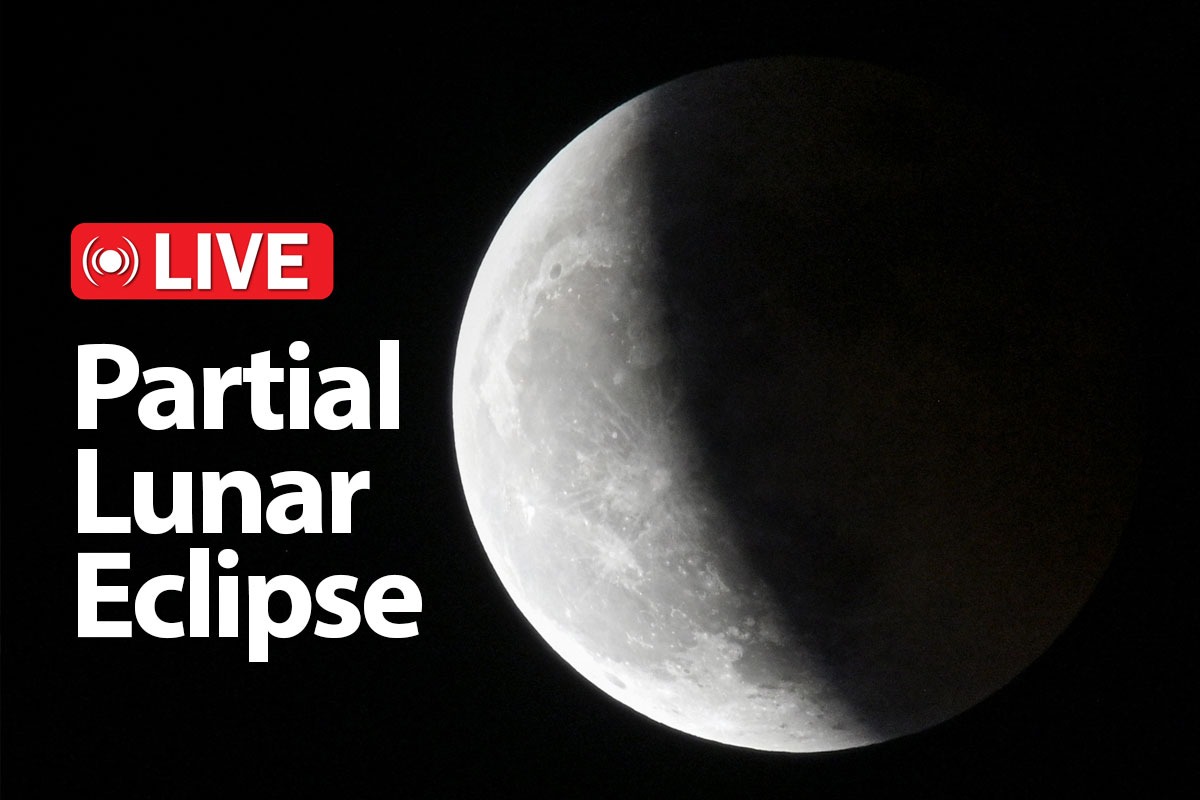
A partial lunar eclipse will take over the night sky on Saturday, October 28 to Sunday, October 29. for a dazzling show that will allow sky-gazers to see part of Earth’s shadow reflected on the moon. Surrounding the partial eclipse will be a penumbral eclipse that begins at 2:01 p.m. ET and causes the moon to dim slightly from the reflection of Earth’s outer shadow, otherwise known as the penumbra, before the planet’s inner and darker shadow, the umbra, creates the partial eclipse. People along the eastern coasts of North and South America will be able to see the tail end of the penumbral eclipse, just before it ends at 6:26 p.m. ET.
Lunar eclipses occur when the Earth positions itself between the sun and the moon and casts a shadow on the surface of the moon. They can only occur during a full moon and are an interesting target for skywatching.
The last total lunar eclipse that occurred on November 8, 2022, thrilled skywatchers worldwide, the next total lunar eclipse — also known as a bloodmoon lunar eclipse — won’t happen until March 13/14, 2025.
There are three types of lunar eclipses depending on how the sun, Earth and moon are aligned at the time of the event.
Details of the partial lunar eclipse
- Total lunar eclipse: Earth’s shadow is cast across the entire lunar surface.
- Partial lunar eclipse: During a partial lunar eclipse, only part of the moon enters Earth’s shadow, which may look like it is taking a “bite” out of the lunar surface. Earth’s shadow will appear dark on the side of the moon facing Earth. How much of a “bite” we see depends on how the sun, Earth and moon align, according to NASA.
- Penumbral lunar eclipse: The faint outer part of Earth’s shadow is cast across the lunar surface. This type of eclipse is not as dramatic as the other two and can be difficult to see.
Why does the moon take on a red colour?
The natural phenomenon that causes the moon to change colour and take on a reddish hue is the same phenomenon that causes blue skies or coloured sunsets. It is all about Rayleigh scattering. This colour change effect occurs when sunlight passes through the layers of the atmosphere, which contains gases with different densities, so it decomposes, just as it does with a prism.
In this case, the light coming from the sun travels in the form of waves, which means that when they separate, due to their physical properties, each colour is dispersed in different ways, taking into account that there are also particles suspended in the atmosphere that cause the rays to bounce.
At what time the Lunar Eclipse can be seen
| 9 pm ET (UTC-5) - Eastern Time | West Virginia, Velmont, Tennessee (EST), South Carolina, Rhode Island, Pennsylvania, Ohio, North Carolina, New York, New Jersey, New Hampshire, Michigan (EST), Massachusetts, Maryland, Maine, Kentucky (EST), Indiana (EST), Georgia, Florida (EST), District of Columbia, Delaware and Connecticut. |
| 8 pm CT (UTC-6) - Central Time | Wisconsin, Texas (Most states), Tennessee (CST), South Dakota (CST), Oklahoma, North Dakota (CST), Nebraska (CST), Minnesota, Mississippi, Missouri, Michigan (CST), Kentucky (CST), Kansas (CST), Iowa, Indiana (CST), Illinois, Florida (CST), Arkansas and Alabama. |
| 7 pm MT (UTC-7) - Mountain Time | Wyoming, Utah, Texas (El Paso and Hudspeth), South Dakota (MST), Oregon (MST), North Dakota (MST), New Mexico, Nevada (MST), Nebraska (MST), Montana, Kansas (MST), Idaho (MST), Colorado and Arizona. |
| 6 pm PT (UTC-8) - Pacific Time | Washington, Oregon (PST), New Hampshire, Nevada (PST), Idaho (PST) and California. |
When is the lunar eclipse 2023?
The date for this astronomical event, one of the last of the year 2023, can be witnessed in different skies of the world this Saturday, October 28 at different times and will be visible from the territories of Europe, Asia, Australia, Africa, South America and part of North America, which includes some states of Mexico.

How to watch a partial lunar eclipse
You do not need a telescope to watch and enjoy a partial lunar eclipse. However, binoculars or a small telescope will help you appreciate the details of the lunar surface. If the eclipse occurs in winter, dress warmly if you are going to be outside all day: an eclipse can take a couple of hours to develop. It is advisable to bring warm drinks and blankets or chairs for comfort.
In which countries can the partial lunar eclipse be seen?
Due to the itinerary of the previous eclipse only a part of the countries of the western hemisphere could enjoy this magnificent experience, but the last eclipse of the year will be visible from a much wider territory that includes countries of all continents.
This time, as long as local weather conditions allow it, have the opportunity to admire the partial lunar eclipse people who are in:
- The eastern states of North America
- The eastern countries of Central and South America
- Europe
- Africa
- Asia
- Australia
- The Arctic and Antarctica
What is the process of a partial lunar eclipse?
At the beginning of the eclipse, the Moon moves into the outer, lighter part of the Earth’s shadow, known as the penumbra. For eclipse watchers in the United States, the eclipse will begin with this penumbral stage, when the Earth moves between the Moon and the Sun, and our planet’s shadow first falls across the lunar disk.
As the Earth moves over the Moon, the darker inner part of its shadow, the umbra, begins to fall on the lunar disk. This is followed by the maximum eclipse, when the Earth’s umbra covers a large part of the Moon.
The partial eclipse ends when the moon leaves the umbra, returns to the penumbra and a second stage of penumbral eclipse occurs. Finally, the Moon exits penumbra, also signaling the end of the lunar eclipse.
How long will it last?
From start to finish, the eclipse will last 285 minutes. And the Moon will be in Earth’s dark shadow (for the partial eclipse) for only 78 minutes.
In a lunar eclipse, the Earth’s shadow falls on the Moon. So, if the Moon passes through the Earth’s dark central shadow, the umbra, a partial or total lunar eclipse occurs. On the other hand, if the Moon only passes through the outer part of the shadow (the penumbra), a subtle penumbral eclipse occurs.



